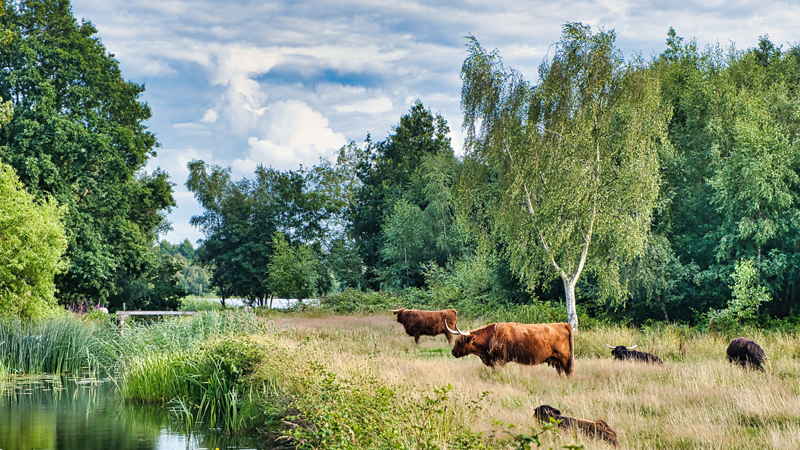RESEARCHERS at Wageningen University & Research (WUR) have found that recoupling livestock and feed production in the Netherlands would reduce ammonia emissions (nearly half) and greenhouse gas emissions (more than a quarter), nearly meeting the national climate goals for 2030.
The researchers note in the paper’s abstract that, “In many places on earth, livestock and feed production are decoupled, as feed is grown in one region and fed to livestock in another. This disrupts nutrient cycles by depleting resources in feed producing regions and accumulating resources in livestock areas, which leads to environmental degradation. One solution is to recouple livestock and feed production at a more local level, which enhances nutrient circularity. Recoupling livestock and feed production creates a natural ceiling for livestock numbers based on the feed producing capacity of a region.”
For the study, researchers used FOODSOM, an agro-ecological food system optimisation model representing the Dutch food system. The Netherlands is one example of a region with particularly high livestock densities and resource accumulation.
When recoupling livestock and feed, the scientists found that livestock numbers would decrease – especially in the poultry and pig sector, where numbers would need to more than halve. The Netherlands has a large area of permanent grassland which can be utilised by cattle and sheep, but the amount of arable land available to produce feed for pigs and poultry is limited.
The livestock density in the Netherlands is currently the highest in Europe and much of the feed is imported. This has resulted in a large surplus of nutrients in animal manure causing groundwater pollution, greenhouse gas emissions, and excessive ammonia emissions. This contributes to high the nitrogen deposition rates that damage The Netherlands’ nature areas.
Researcher Ben van Selm said, “Recoupling livestock and feed production creates a natural ceiling for livestock numbers. The amount of feed produced in a region then determines the number of pigs, cattle and poultry that can be produced.”
Researcher Professor Imke de Boer said, “Recoupling livestock and feed production at a local level is a logical step to restore nutrient recycling in food systems. It creates a natural ceiling for livestock numbers based on the feed production capacity of a region. Our food system explorations may be used in the policy process to reform the food system. We show that recoupling livestock and feed production is a promising next step to enhance circularity while decreasing agricultures environmental impact.”
